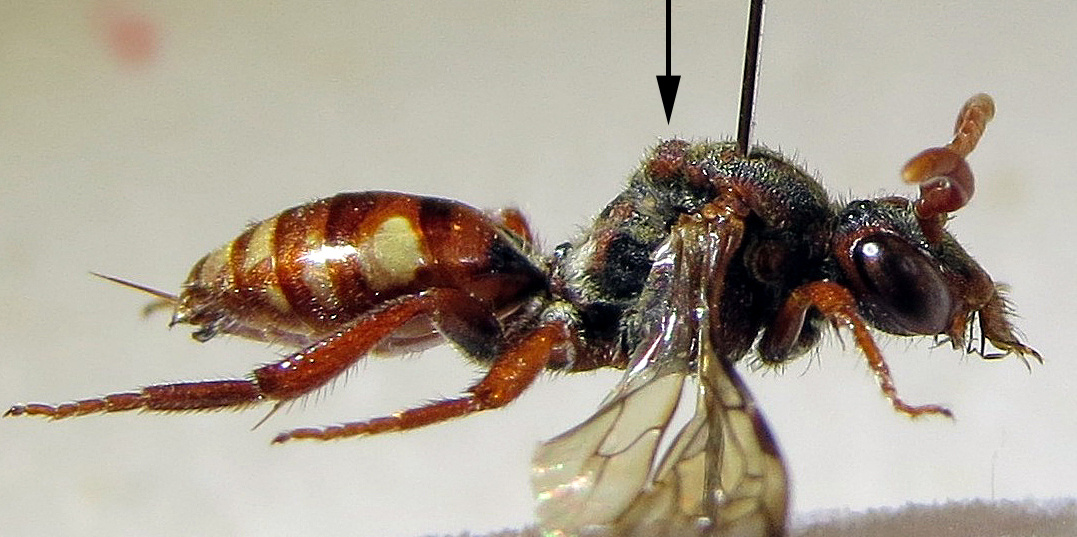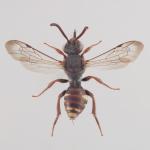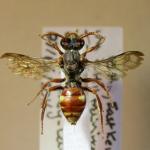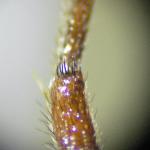Nomada ochrostoma_homonym Zetterstedt, 1838, Nomada quinquespinosa Thomson, 1870, Nomada alboguttata var. liburnica Friese, 1921, Nomada alboguttata var. suerinensis Friese, 1921, Nomada alboguttata etizenensis Tsuneki, 1975
Discovered in Britain from east Kent in June 2016.
Widespread across much of central and northern Europe, from France eastwards to Slovenia, and northwards to Fenno-Scandia and Russia
To separate this species from its congener N. baccata:
Nomada alboguttata: Large, forewing length 7-10mm, scutellum distinctly raised above the level of of the plane of the scutum (see image below).
Nomada baccata: Small, forewing length circa 5mm (given as up to 6mm in European literature), scutellum on the same level as the plane of the scutum.

Sandy places on heathlands and open woodland
A partly bivoltine species; from the beginning of April to the middle of June, and again from the end of July to the end of September
Probably a cleptoparasite of Andrena barbilabris in Britain. Elsewhere in Europe it is known that Andrena barbilabris is the major host, but it is probably also cleptoparasitic on A. ventralis (Westrich, 1989) and possibly A. argentata.
As this is a cleptoparasitic species, all flower visits will be for nectar only. Westrich (1989) lists the following plant species as nectar sources: Salix (Salicaceae); Taraxacum officinale (Asteraceae); Frangula alnus (Rhamnaceae); Jasione montana (Campanulaceae); Succisa pratensis (Dipsacaceae).
Smit et al. (2004) citing others lists Hieracium sp., Taraxacum officinale (Asteraceae) and Salix repens (Salicaceae) as nectar sources in the Netherlands
2016




